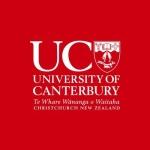University of Canterbury announces demolition of two buildings on campus
The University of Canterbury will deconstruct the Mushroom and Siemon buildings on its Ilam campus with demolition work set to begin in mid-October.
A small number of buildings at the University have been closed due to earthquake damage, including the Mushroom and Siemon buildings on either side of the Engineering and Physical Sciences (EPS) Library.
The deconstruction of the Mushroom and Siemon buildings is funded by a cash settlement from the University’s insurers. Deconstruction was recommended following a review of technical and financial information, access and use of buildings, and with regard to the Campus Master Plan.
“The University of Canterbury is facing unprecedented challenges with regard to its physical estate and financial circumstances as a result of the earthquakes,” said University of Canterbury Vice-Chancellor, Dr Rod Carr. “The decision to deconstruct required agreement with the insurers, consent from the Christchurch City Council and permission from the Director General of Education on the advice of the Tertiary Education Commission.
“Such decisions are always difficult, are not taken lightly and in some cases are in the end matters of judgment. I want to acknowledge the impact these changes will have on staff and students and would like to assure them that their patience and commitment is appreciated in such extraordinary and difficult times.”
Alternative accommodation for about 15 faculty staff and 6 postgraduate students of the Department of Chemical and Process Engineering (CAPE), and about 12 College Office staff is being assessed. Use of existing infrastructure for this purpose is preferred so as to improve asset utilisation, reduce overheads and preserve capital for essential remediation.
Accordingly, taking a medium term view, the Senior Management Team has approved a proposal to relocate the EPS library collection to the Central Library in the James Hight building and repurpose the EPS library building to house student learning space, appropriate learning resources, the Engineering College Office and CAPE staff office.
Relocation of the EPS library collection will occur when the James Hight building is fully remediated, a process expected to take around 16 months. The seventh floor of the James Hight building, previously occupied by offices, will become dedicated library space. The need to defer collection consolidation is expected to impose a cost of around $300k in foregone savings.
The EPS Library, currently closed, can in the interim reopen once the demolition of the Mushroom and Siemon buildings has taken place. A new entrance “link” is proposed to be constructed on the old Mushroom building site. This “link” will include a dedicated student study space and will eventually provide a welcoming new entrance into the precinct as identified in the Campus Master Plan.
“The long-term relocation of the EPS library also meets the requirement that libraries should be located close to the heart of the campus according to the draft Campus Master Plan,” said Professor Sue McKnight, Pro-Vice-Chancellor for Learning Resources and University Librarian. “For students and staff, the relocation will add to the vibrant hub of activity that is growing at the centre of the University.
“Infrastructure efficiencies that result from the relocation will enable the University to provide a better service to staff and students. The more collections that are located in the same location, the easier it will be to offer extended hours of service in the future.
“The length of time before relocation of the EPS Library allows ample opportunity for careful consideration in rationalising both EPS and Central Library collections. Purchase of digital versions of print library resources in the interim will also lessen the demand for physical space.”
Until then, staff from the College of Engineering and CAPE will continue to occupy temporary accommodation. Alternative CAPE laboratory space has been identified and centralised timetabling and better utilisation of teaching spaces will compensate for the loss of lecture spaces in the College of Engineering.”
